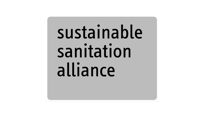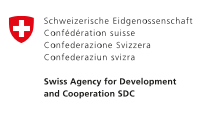Appropriate SWM refers to a controlled and strategic approach to the sustainable management of solid wastes. It entails progressing towards environmentally sound management for all waste - covering all sources of waste generation and all aspects of the service and resource value chain, including waste avoidance, reduction, generation, segregation, collection, transfer, transport, sorting, treatment, recycling, recovery and disposal. Solid waste management is a cross-cutting issue which impacts many global challenges such as health, environmental degradation, climate change, poverty reduction, food and resource security and sustainable production and consumption.
But what is waste? Solid waste is any solid, discarded material generated from human activities. Waste becomes waste when the person discarding it has no further use for it, irrespective of whether it has use or value to others. There are different ways of categorising solid waste. A common starting point is to differentiate waste by its source, i.e. the location or entity generating the waste. For example, household waste encompasses different materials discarded by household members. A wider category is ’Domestic Waste’ or ’Municipal Solid Waste’ (MSW) - both describe the different sources and types of solid waste generated in a settlement. Domestic Waste includes discarded materials from households, commerce, schools, offices and public spaces. Domestic Waste may even include waste from small industry, construction and demolition debris or agricultural waste generated in the settlement area. This Compendium focuses on humanitarian Domestic Waste: the generation and management of wastes from households, commerce, schools, offices and public spaces linked to a humanitarian crisis and humanitarian aid, or to the aid response itself.
Waste can be further categorised by its type. For example, organic waste from households or restaurants typically consisting of easily biodegradable organic material is described as organic food/kitchen waste. Slower degrading cuttings from trees and bushes are also organic and may also originate from the household but would be described (and managed) as organic garden/wood waste. Other examples of such product type descriptions are e-Waste ([W.7]), or Hazardous Waste ([W.2]).
The next level of detail in describing waste is its specific material composition, for instance differentiating between the types of waste plastics in packaging waste or the substances contained in e-waste.
The amount and characteristics of solid waste can vary considerably between emergency phases, communities and nations depending on consumption patterns, income and lifestyle.
Integrated Sustainable Waste Management (ISWM)
Developing a waste management system is complex. In addition to infrastructure, technology, equipment and operations, SWM interacts with and depends on numerous, diverse actors with different behaviours and perceptions. To be sustainable in the long term, consideration needs to be given to:
The physical elements (infrastructure and equipment) of the system along the entire SWM service chain: from waste generation through storage, collection, transport, transfer, recycling, recovery, treatment and disposal. This includes appropriate infrastructure, technology and equipment which is ’fit for purpose’ and that is operated and maintained according to best practice, to ensure reliable and safe service for all. These physical elements are described in more detail in PART 2 of the Compendium.
The stakeholders (actors), who include local, regional and national governments, waste generators/service users (households, commerce and institutions), manufacturers of the consumer goods which become waste at the end of their life, service providers (public or private sector, formal or informal, large or small), civil society and national non-governmental organisations, those outside the affected community impacted by the SWM process and international aid agencies.
Institutional and legislative aspects, i.e. adhering to national or international strategy, policy and political goals such as specific technology solutions endorsed for waste treatment and the avoidance of certain products and materials.
Financial and socio-economic aspects require the system to be cost-effective, affordable and well-financed. In addition to capital expenditure, attention must be paid to how ongoing operational expenditures will be covered.
Integrated Solid Waste Management (ISWM)
The Monitoring [X.3] of key performance criteria is often overlooked but is essential to operate an efficient SWM system and understand how the service interacts and performs with respect to the above issues. Monitoring starts with a careful assessment [P.3] of the baseline conditions in which the service is established.







